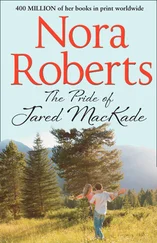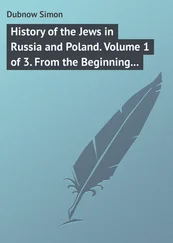If a dispute in a small-scale society is not resolved peacefully between the participants, the alternative is violence or war, because there is no state justice to intervene. In the absence of strong political leadership and of the state’s assertion of a monopoly on the use of force, violence tends to lead to cycles of revenge killings. My brief Chapter 3illustrates traditional warfare by describing an apparently tiny war among the Dani people of the western New Guinea Highlands. My lengthier Chapter 4then reviews traditional warfare around the world, in order to understand whether it really deserves to be defined as war, why its proportionate death toll is often so high, how it differs from state warfare, and why wars are more prevalent among some peoples than among others.
This book’s third part consists of two chapters about opposite ends of the human life cycle: childhood ( Chapter 5) and old age ( Chapter 6). The range of traditional child-rearing practices is broad, from societies with more repressive practices to societies with more laissez-faire practices than are tolerated in most state societies. Nevertheless, some frequent themes emerge from a survey of traditional child-rearing. Readers of this chapter are likely to find themselves admiring some but being horrified at other traditional child-rearing practices, and asking whether some of the admirable practices could be incorporated into our own child-rearing repertoire.
As for treatment of the elderly ( Chapter 6), some traditional societies, especially nomadic ones or those in harsh environments, are forced to neglect, abandon, or kill their elderly. Others afford their elderly far more satisfying and productive lives than do most Westernized societies. Factors behind this variation include environmental conditions, the utility and power of the elderly, and society’s values and rules. The greatly increased lifespans and apparently decreased utilities of the elderly in modern societies have created for us a tragedy, towards whose amelioration those traditional societies providing their elderly with satisfying useful lives may offer examples.
Part 4consists of two chapters on dangers and our responses to them. I begin ( Chapter 7) by describing three actually or apparently dangerous experiences that I survived in New Guinea, and what I learned from them about a widespread attitude of traditional peoples that I admire and term “constructive paranoia.” By that paradoxical expression, I mean routinely reflecting on the significance of small events or signs that on each occasion carry low risks but that are likely to recur thousands of times in one’s lifetime, and hence are ultimately likely to prove crippling or fatal if ignored. “Accidents” don’t just happen at random or through bad luck: everything is traditionally viewed as happening for a reason, so one must remain alert to the possible reasons and be cautious. The following Chapter 8describes the types of dangers inherent in traditional life, and the diverse ways in which people respond to them. It turns out that our perceptions of dangers, and our reactions to them, are systematically irrational in several ways.
The concluding Part 5comprises three chapters on three topics central to human life and changing rapidly in modern times: religion, language diversity, and health. Chapter 9, about the uniquely human phenomenon of religion, follows straight on from Chapters 7and 8about dangers, because our traditional constant search for causes of danger may have contributed to religion’s origins. Religion’s near-ubiquity among human societies suggests that it fulfills important functions, regardless of whether its claims are true. But religion has fulfilled different functions whose relative importance has changed as human societies have evolved. It is interesting to speculate about which functions of religion are likely to be strongest over the coming decades.
Language ( Chapter 10), like religion, is unique to humans: in fact, it’s often considered the most important attribute distinguishing humans from (other) animals. While the median number of speakers of a language is only a few hundred to a few thousand individuals for most small-scale hunter-gatherer societies, members of many such societies are routinely multilingual. Modern Americans often assume that multilingualism should be discouraged, because it is supposed to hinder child language acquisition and immigrant assimilation. However, recent work suggests that multilingual people gain important life-long cognitive benefits. Nevertheless, languages are now disappearing so rapidly that 95% of the world’s languages will be extinct or moribund within a century if current trends continue. The consequences of this undoubted fact are as controversial as are the consequences of multilingualism: many people would welcome a world reduced to just a few widespread languages, while other people point to advantages that language diversity brings to societies as well as to individuals.
The last chapter ( Chapter 11) is also the one of most direct practical relevance to us today. Most of us citizens of modern states will die of non-communicable diseases—diabetes, hypertension, stroke, heart attacks, various cancers, and others—that are rare or unknown among traditional peoples, who nevertheless often proceed to acquire these diseases within a decade or two of adopting a Westernized lifestyle. Evidently, something about the Westernized lifestyle brings on these diseases, and we could minimize our risk of dying of these commonest causes of our deaths if we could minimize those lifestyle risk factors. I illustrate these grim realities by the two examples of hypertension and Type-2 diabetes. Both of these diseases involve genes that must have been advantageous to us under conditions of traditional lifestyles, but that have become lethal under conditions of the Westernized lifestyle. Many modern individuals have reflected on these facts, modified their lifestyles accordingly, and thereby extended their lifespans and improved their quality of life. Thus, if these diseases kill us, it is with our own permission.
Finally, the Epiloguecomes full cycle from the Port Moresby airport scene with which my Prologue began. It’s not until my arrival at Los Angeles airport that I begin my emotional reimmersion in the American society that is my home, after months in New Guinea. Despite the drastic differences between Los Angeles and New Guinea’s jungles, much of the world until yesterday lives on in our bodies and in our societies. The recent big changes began only 11,000 years ago even in the world region where they first appeared, began just a few decades ago in the most populous areas of New Guinea, and have barely begun in the few remaining still-uncontacted areas of New Guinea and the Amazon. But for those of us who have grown up in modern state societies, modern conditions of life are so pervasive, and so taken for granted, that it’s hard for us to notice the fundamental differences of traditional societies during short visits to them. Hence the Epilogue begins by recounting some of those differences as they strike me upon arriving at Los Angeles airport, and as they strike American children, or New Guinea and African villagers, who grew up in traditional societies and then moved to the West as teen-agers or adults. I have dedicated this book to one such friend, Meg Taylor (Dame Meg Taylor), who grew up in the Highlands of Papua New Guinea and spent many years in the United States as her country’s Ambassador and as Vice President of the World Bank Group. Page 468briefly summarizes Meg’s experiences.
Traditional societies represent thousands of millennia-long natural experiments in organizing human lives. We can’t repeat those experiments by redesigning thousands of societies today in order to wait decades and observe the outcomes; we have to learn from the societies that already ran the experiments. When we learn about features of traditional life, some of them are ones that we feel relieved to be rid of, and that make us appreciate our own societies better. Other features are ones that we are likely to envy, or to view their loss wistfully, or to ask whether we could selectively adopt or adapt them for ourselves. For instance, we certainly envy the traditional lack of the non-communicable diseases associated with the Westernized lifestyle. When we learn about traditional dispute resolution, child-rearing, treatment of the elderly, alertness to dangers, and routine multilingualism, we may also decide that some of those traditional features would be desirable and feasible for us to incorporate.
Читать дальше










